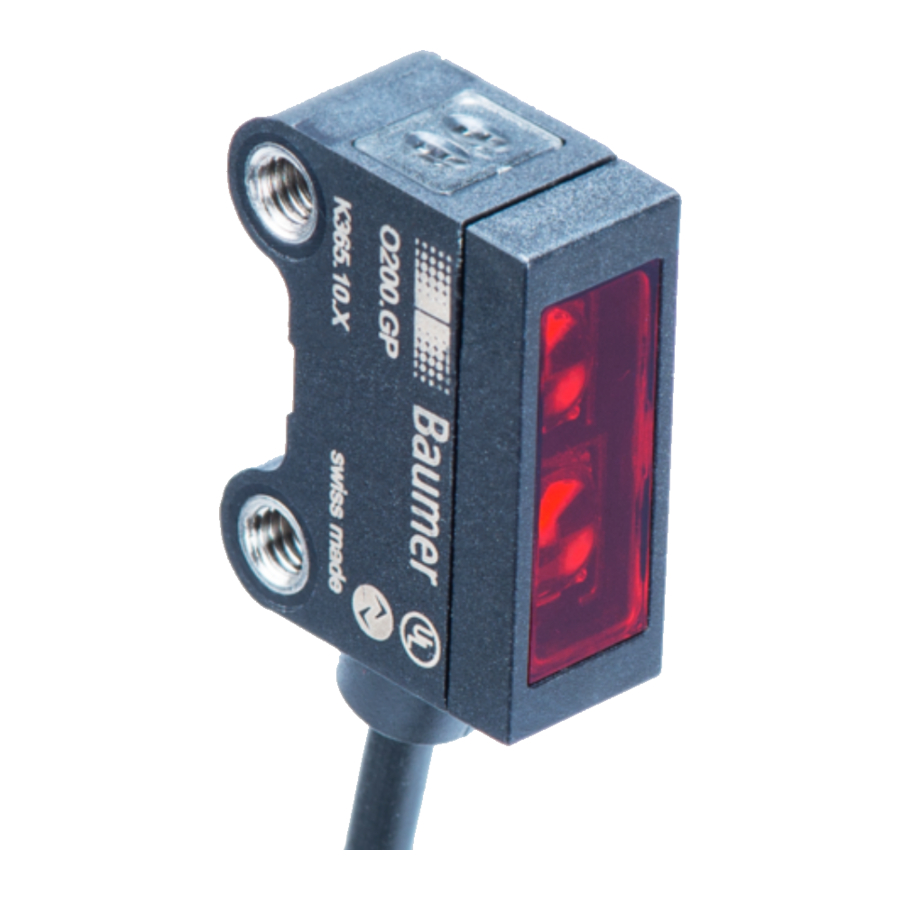Baumer O200 Інструкція з експлуатації - Сторінка 3
Переглянути онлайн або завантажити pdf Інструкція з експлуатації для Аксесуари Baumer O200. Baumer O200 34 сторінки. Sensors with io-link

1
Sensors covered by this manual
These instruction applies to all O200 sensors with IO-Link interface: O200.G, O200.S, O200:R
2
IO-Link Introduction
IO-Link is an IO technology standardized worldwide according to IEC 61131-9. It permits manufacturer-
independent digital, bidirectional point-to-point communication. For this purpose, sensors are connected to
the IO-Link master via standardized 3-wire plug-in cables. IO-Link is available for various sensor
technologies and can also be integrated into small miniature sensors. See also
With the IO-Link master, which bundles several sensors, the connection to the controller is made via the
respective fieldbus system. In addition, an Ethernet-based connection (with OPC UA) from the master allows
direct communication from the sensor to IT systems. IO-Link masters are available as field devices for
decentralized mounting or as versions for mounting in control cabinets. Many control suppliers also offer IO-
Link input terminals and thus an IO-Link master implemented directly on the control. The maximum cable
length between sensor and master is 20 m. However, significantly longer connections from the sensor to the
controller can be realized by connecting a field master to a field bus system. This gives them maximum
flexibility in the connection solution.
As a member of the IO-Link Consortium, Baumer is involved in developing the standard and is one of the
first manufacturers to feature the new Smart Sensor Profile 1.1. in its sensors.
Figure 1 Example of a system architecture using IO-Link
SIO / DI Mode Mode
2.1
Each port of the IO-Link master can be operated either in SIO mode (standard in-out mode: according to the
latest specification DI mode for sensors and DQ mode for actuators) or in IO-Link mode and thus process
the information of all sensors. In SIO mode, the binary switching output (NPN, PNP or push-pull) of the
sensor is used. In IO-Link mode, the output of the sensor (pin 4) is used as a bidirectional, digital interface to
exchange measurement and diagnostic information.
en_BA_O200_IO-Link_V1.docx
15.08.2018/
3/34
here
for more information.
Baumer Electric AG
Frauenfeld, Switzerland
